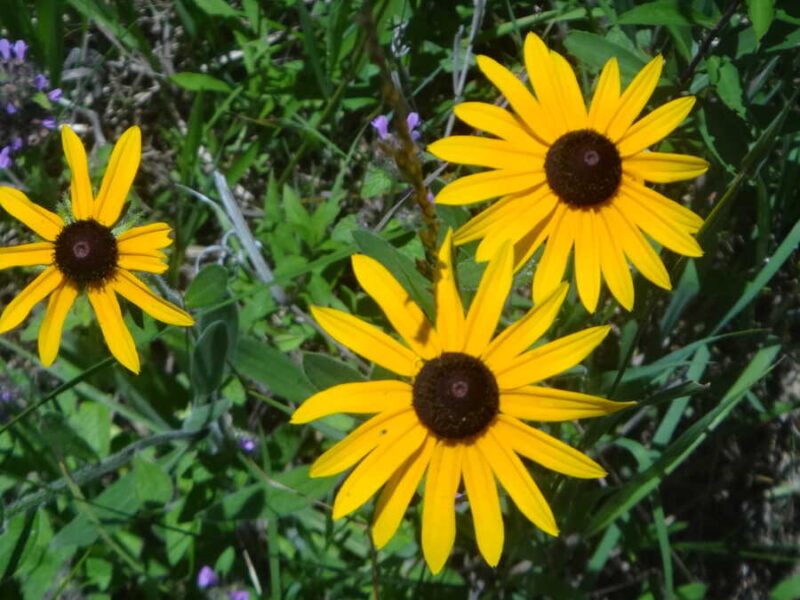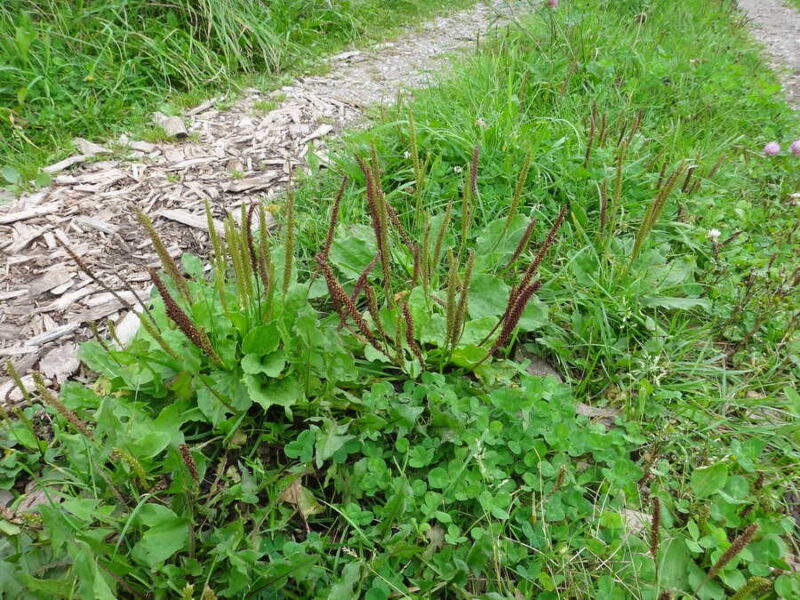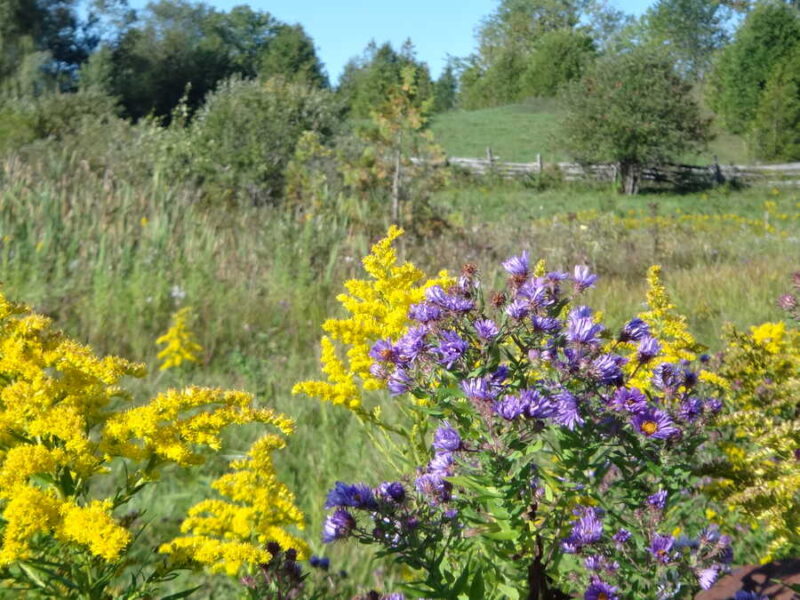Skip to content
-
-
-
$4.00
- (Lotus corniculatus) (Not germination tested - 2023 seed.) Perennial flower in the legume family. Beautiful little yellow flowers. Some pollinators appreciate it and it fixes nitrogen, but it is not native and can outperform native species in some conditions – invasive in some areas. Useful for erosion control/ground cover, recovering heavily degraded soils, and as nutritious livestock feed. 4000 seeds/packet.
- Add to cart
-
-
-
$4.00
- (Rudbeckia hirta) (Not germination tested*) Native wildflower. Blooms once per stem staggered over several months through midsummer. Composite flowers have bright yellow petals and a dark brown to black domed centre. Slightly hairy foliage. Grows a 1-3’/30-100cm tall. Beautiful in bouquets, popular with pollinators, and has been used medicinally. 500 seeds/packet. *Wildflower seeds tend to have a high proportion of “hard” seed which will not necesarrily germinate even under favourable…
- Add to cart
-
-
-
$4.00
- (Plantago major) (Not germination tested*) Diminutive herbaceous perennial. Native to Eurasia, but widespread in North America. The leaves are edible (young raw, old stewed) and highly nutritious.. The husks substitute decently for psyllium husk for mucilage production in low/no-gluten baking. Has been used medicinally. Plantain is tough – can take mowing, trampling, and compacted soils, so good for abused land. 5000 seeds/packet. *Wildflower seeds tend to have a high proportion…
- Add to cart
-
-
-
$4.00
- (Asclepias syriaca) (Not germination tested*) Native perennial wildflower. Food source for hundreds of insect species; famously, the exclusive food source for Monarch butterflies. Toxic to grazers. Beautiful pinkish spherical clusters of flowers. Large, smooth, oval leaves. Fascinating seedpods which (if you’re a child) are clearly meant to be use as little lopsided boats. The parachute seeds are fun to play with too. The stems have been used for fibre and…
- Add to cart
-
-
Out of Stock
-
$4.00
- (Calendula officinalis) Calendula variety grown commercially for its high production of resin, which has medicinal properties. We dry calendula flowers to make a simple salve which is our go-to treatment for minor cuts, skin irritation, and cracked/chapped skin. Cheerful, bright orange flowers are also medicinal for the mood in the garden – just look at them and smile! 45 seeds/packet.
- Read more
-
-
-
$4.00
- (Solidago spp.) (Not germination tested*) Gorgeous multitudes of tiny vibrantly yellow flowers in the late fall – pairs beautifully with asters. Native perennial that grows from rhizomes. Species are hard to identify and distinguish, so our seed is simply a mix of what’s around here. Some goldenrods are short, but these are all around waist-high. Goldenrods are a keystone species for pollinator biodiversity, providing important late-season nectar and pollen. You…
- Add to cart
-
-
-
- (Eutrochium sp.) (Not germination tested*) Native perennial wildflower that grows in swamps. Numerous small pink flowers on elegant fractal-like stems bloom mid to late summer. Popular with pollinators. 450 seeds/packet. *Wildflower seeds tend to have a high proportion of “hard” seed which will not necesarrily germinate even under favourable conditions. Some will never germinate and some may germinate in future years. Partly because of this, our wildflower seeds are not…
- Read more
-
-
-
$4.00
- (Nigella damascena) Beautiful, delicate little blue and white flowers on feathery leaves give way to weird seedpods. Easy to grow annual, and can self-sow.
- Add to cart
-
-
-
$4.00
- (Symphyotrichum novae-angliae) (Not germination tested*) A beautiful native fall wildflower. Great pollinator plant for the end of the season. Produces many little flowers with bright purple petals and vivid yellow centres. Complements goldenrod in a boquet quite nicely. Flowers tend to close at night and on cold days. Grows in clumps 1-4’/30-120cm tall. 250 seeds/packet. *Wildflower seeds tend to have a high proportion of “hard” seed which will not necesarrily…
- Add to cart
-
-
-
$4.00
- (Calendula officinalis) Annual. My favourite flower for the vegetable garden, calendula is easily grown, whether direct-seeded or transplanted. Knee-high plants raise scores of cheerful, yellow or orange flowers above their leaves to attract every passing pollinator. We harvest and dry the flowers for two uses: they make a fine flavouring in soups and other dishes (turning them a pleasing yellow if you use enough) and they can be used to…
- Add to cart
-
-
-
$4.00
- (Echinacea purpurea) (Not germination tested*) A beautiful, perennial flower. About 3'/1 m tall when in bloom; wonderful in mass plantings. Native to the plains of North America, this plant has been used widely as a medicinal plant to treat colds. 120 seeds.
- Add to cart
-
-
-
$4.00
- (Prunella vulgaris) (Not germination tested*) A native perennial wildflower in the mint family bearing clusters of delicate violet flowers on short stems through most of the summer and fall. Creeps along hugging the ground and rooting stems where they touch the ground. Will often bloom in a lawn even when mowed! The leaves are edible. Has been used medicinally. 150 seeds/packet. *Wildflower seeds tend to have a high proportion of…
- Add to cart
-
-
Out of Stock
-
$4.00
- (Carthamus tinctorius) Annual. An oilseed related to sunflower which has also been used for birdseed; as the Latin name suggests, it also has a long history as a dye-plant, used for reds and oranges. Safflower is very beautiful, and also easy to grow; whether you want to use the seeds or not, it would make a memorable ornamental. Apparently this variety is not as thorny as some, but I would…
- Read more
-
-
-
$4.00
- (Monarda fistulosa) A native perennial wildflower. Flowers are pretty little pink blooms; this is the less showy cousin of the popular ornamental bee balm (Monarda didyma). We grow it for tea: the leaves, especially harvested in early summer, make an excellent tea which tastes like a mixture of peppermint and Earl Grey (which is flavoured with the similarly named but completely unrelated citrus fruit, bergamot orange - Citrus bergamia). 3000…
- Add to cart
-
-
-
$4.00
- (Achillea millefolium) (Not germination tested*) Widespread pernnial wildflower. Some varieties are native, some not, and some are hybrids of the two; this is just what we have growing wild where we live. Flat umbrellas of many tiny white flowers. Usually a couple feet/½m tall. Lovely ornamental. Has been used medicinally. Has some value to pollinators. 100 seeds/packet. *Wildflower seeds tend to have a high proportion of “hard” seed which will…
- Add to cart
-
-
-
$4.00
- (Papaver somniferum) Annual. Mauve flowers are followed by seedheads which, unlike most poppies, do not open vents and scatter their blue-grey seed. This is a major advantage for those looking to make their own poppy-seed cake since it lets you decide when the seeds get scattered! By the way, if you get out a magnifying glass you can see that poppy seeds are "favose-reticulate" - intricately honeycombed. 1/2 tsp/packet.
- Add to cart
















